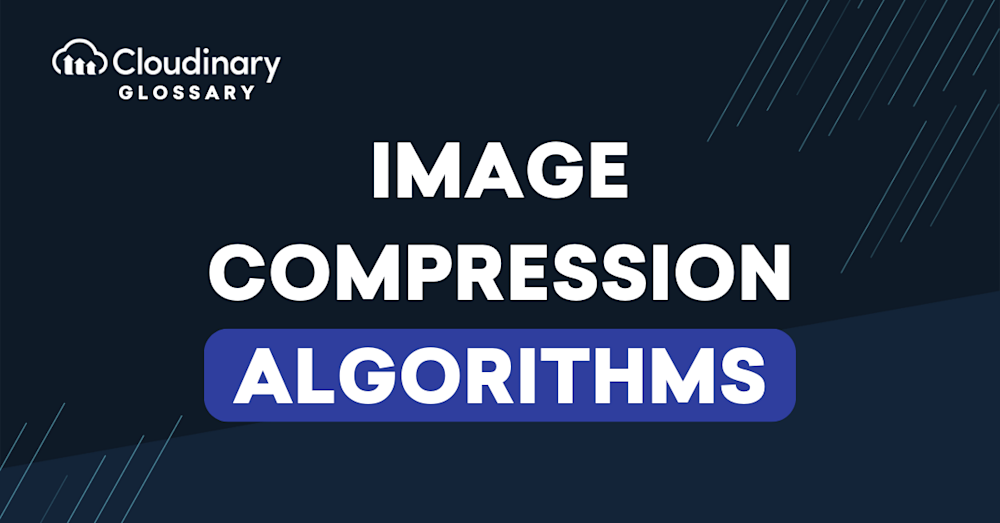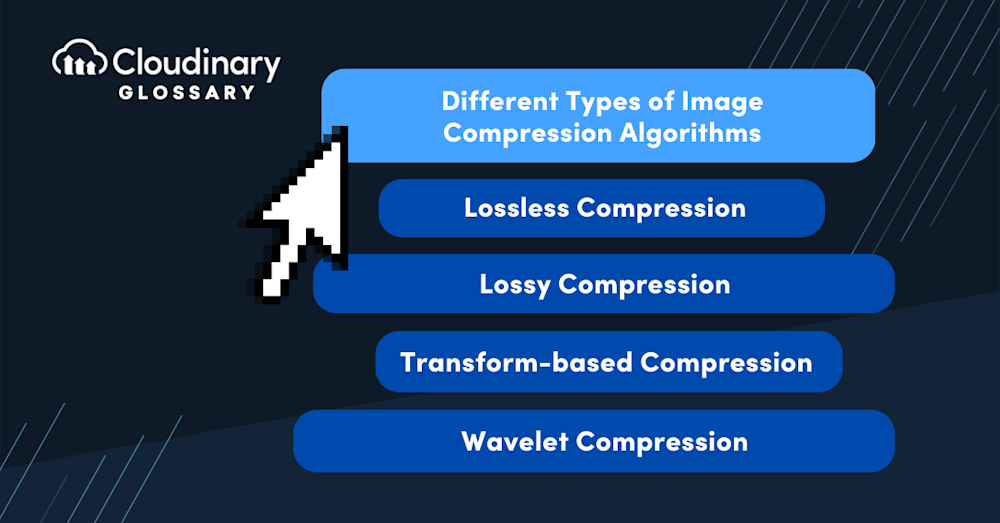What Are Image Compression Algorithms?
At their core, image compression algorithms are a series of steps and methods used to reduce the size of an image file without sacrificing its essential visual information. This is all about striking the perfect balance between minimizing file size and maintaining image quality. Much like how a zip file contains the essence of the documents in a more compact form, image compression algorithms repackage image data more efficiently, making the files easier to store and transmit.
These algorithms can be lossy or lossless. Lossy compression, such as the JPEG format, reduces file size by trimming away some of the image’s data, which might result in a slight loss of quality—think of it as clearing your desk by throwing out unimportant papers. On the flip side, lossless compression, like PNG files, ensures every detail is preserved during the condensation process; it’s more akin to being a master at folding your clothing to fit into a smaller drawer, where every item can still be unfolded to its original state.
Why Do We Need Image Compression Algorithms?
Image compression algorithms play a vital role in how we manage and experience digital data. Given the exponential growth of data generation — driven mainly by the ubiquitous presence of high-resolution photos and videos — effectively managing these immense amounts of data becomes critical. That’s where image compression algorithms come in. They allow us to shrink these large files into more manageable sizes, facilitating faster transmission and more efficient storage. It’s similar to having a big, messy pile of clothes: wouldn’t you rather neatly fold them to make things more manageable and free up some closet space?
From an application perspective, image compression algorithms can significantly improve a user’s interaction with digital platforms. Whether it’s the faster loading of images on a website, sending a family photo through an email without lag, or even streaming your favorite show in high definition, the algorithm’s impact is far-reaching and rather transformative. So in the grand scheme of technology, these image compressions algorithms are not just tech for tech’s sake; they’re essential tools that shape our digital experiences by ensuring data is transmitted and stored efficiently and seamlessly.
Different Types of Image Compression Algorithms
Several image compression algorithms have been developed, each with its approach and advantages. Here are a few commonly used types of image compression algorithms:
- Lossless Compression – Lossless compression algorithms aim to reduce file sizes without any loss of information. They achieve this by identifying and encoding patterns and redundancies within the image data. Lossless compression algorithms such as ZIP, PNG, and GIF are suitable for applications that require exact reproduction of the original image, such as archiving, medical imaging, and text-based graphics.
- Lossy Compression – Lossy compression algorithms achieve higher compression ratios by selectively discarding certain data deemed less critical to human perception. These algorithms balance visual quality with file size reduction. Lossy compression techniques, such as JPEG and WebP, are widely used in applications such as web design, digital photography, and video streaming.
- Transform-based Compression – Transform-based compression algorithms, such as the Discrete Cosine Transform (DCT), analyze image data in the frequency domain to identify and eliminate high-frequency components. This approach is highly effective in capturing and encoding image characteristics efficiently. The JPEG compression algorithm utilizes DCT-based compression.
- Wavelet Compression – Wavelet-based compression algorithms, such as the JPEG2000 standard, leverage the mathematical properties of wavelet functions to achieve high compression ratios while preserving image quality. Wavelet compression is particularly effective in tasks that demand lossy compression with scalable quality, such as image archiving and remote sensing applications.
Use Cases of Image Compression Algorithms
Image compression algorithms find applications across various domains, enabling efficient image storage and delivery:
- Web Design and E-commerce – Image compression algorithms play a vital role in optimizing website performance by reducing page load times. Compressed images ensure faster loading, enhancing user experiences and increasing conversion rates in e-commerce applications.
- Digital Photography – Image compression allows photographers to store, transmit, and share high-resolution images without consuming excessive storage space or bandwidth. Lossy compression algorithms strike a balance between file size reduction and maintaining acceptable visual quality.
- Video Streaming – Video streaming platforms heavily rely on compression algorithms to efficiently transmit video frames over the internet. By applying compression to individual frames and between frames, video streaming services deliver high-quality videos while minimizing buffering and optimizing bandwidth usage.
- Medical Imaging – In medical imaging, such as MRI and CT scans, the accurate representation of images is critical. Lossless compression algorithms ensure that image details are preserved while reducing storage requirements, facilitating efficient communication, and analysis of medical data.
Conclusion
Image compression algorithms are indispensable tools for optimizing image storage and delivery, enabling faster loading times, minimizing bandwidth usage, and preserving visual quality. Whether it is for web design, digital photography, video streaming, or medical imaging, image compression algorithms are essential in maintaining efficiency and delivering an exceptional user experience in the digital world.
Boost your website’s speed and user experience by optimizing your media assets with Cloudinary. Sign up today.
Additional Resources You May Find Useful:



